Introduction
The integration of Robotic Process Automation (RPA) in healthcare operations is revolutionizing the industry, offering a beacon of efficiency in a sea of data. RPA is transforming various aspects of healthcare, from electronic health records management to appointment scheduling, billing, and supply chain optimization. By automating these manual processes, healthcare organizations can enhance accuracy, efficiency, and patient care.
RPA's ability to extract and validate patient data, streamline administrative responsibilities, and optimize resource use leads to improved financial performance and operational excellence. Moreover, the integration of RPA with advanced AI technologies, such as Natural Language Processing (NLP) and Machine Learning (ML), further elevates its capabilities, enabling the interpretation and management of complex medical records. The strategic use of RPA in healthcare not only reinforces digital transformation but also paves the way for a more resilient and patient-centric future.
Use Case 1: Electronic Health Records Management
The integration of Robotic Process Automation (RPA) into the management of electronic health records (EHRs) is transforming healthcare operations, offering a beacon of efficiency in a sea of data. In the wake of a healthcare sector that is experiencing a growing number of bankruptcies and grappling with outdated legacy systems, RPA emerges as a critical solution. About 73% of healthcare organizations are still tethered to these legacy systems, which increases vulnerability to security incidents due to the lack of support and updates.
RPA offers a means to modernize these systems without the need to fully replace them, thereby mitigating the risks associated with outdated technology.
When considering the adoption of RPA, healthcare leaders are tasked with identifying specific manual processes that are ripe for automation. This involves a detailed assessment of inefficiencies in existing workflows, determining the potential for improved accuracy and efficiency. For instance, bots can be programmed to flawlessly extract and validate patient data from various sources, ensuring that patient records remain up-to-date and error-free.
This not only frees healthcare professionals from the drudgery of manual data entry but also enhances the focus on patient care.
The deployment of RPA in EHR management is a testament to the power of digital transformation in healthcare. By creating a library of tools to support intelligent automation and initiating automation with smaller tasks, healthcare organizations can pave the way for tackling more complex workflows. Continuous monitoring and documentation of automation results are imperative, serving as a foundation for future projects and showcasing the profound impact of RPA on the healthcare industry.
As Amy Raymond, senior vice president of revenue cycle operations at AKASA, pointed out, automation is not merely an option but an imperative in modernizing the revenue cycle. It empowers healthcare organizations to conquer new frontiers in efficiency, financial performance, and patient care. In the era of digital assurance, where the security and appropriateness of technology are paramount, RPA stands as a pivotal force, ensuring that healthcare providers can confidently step into the future of patient data management.
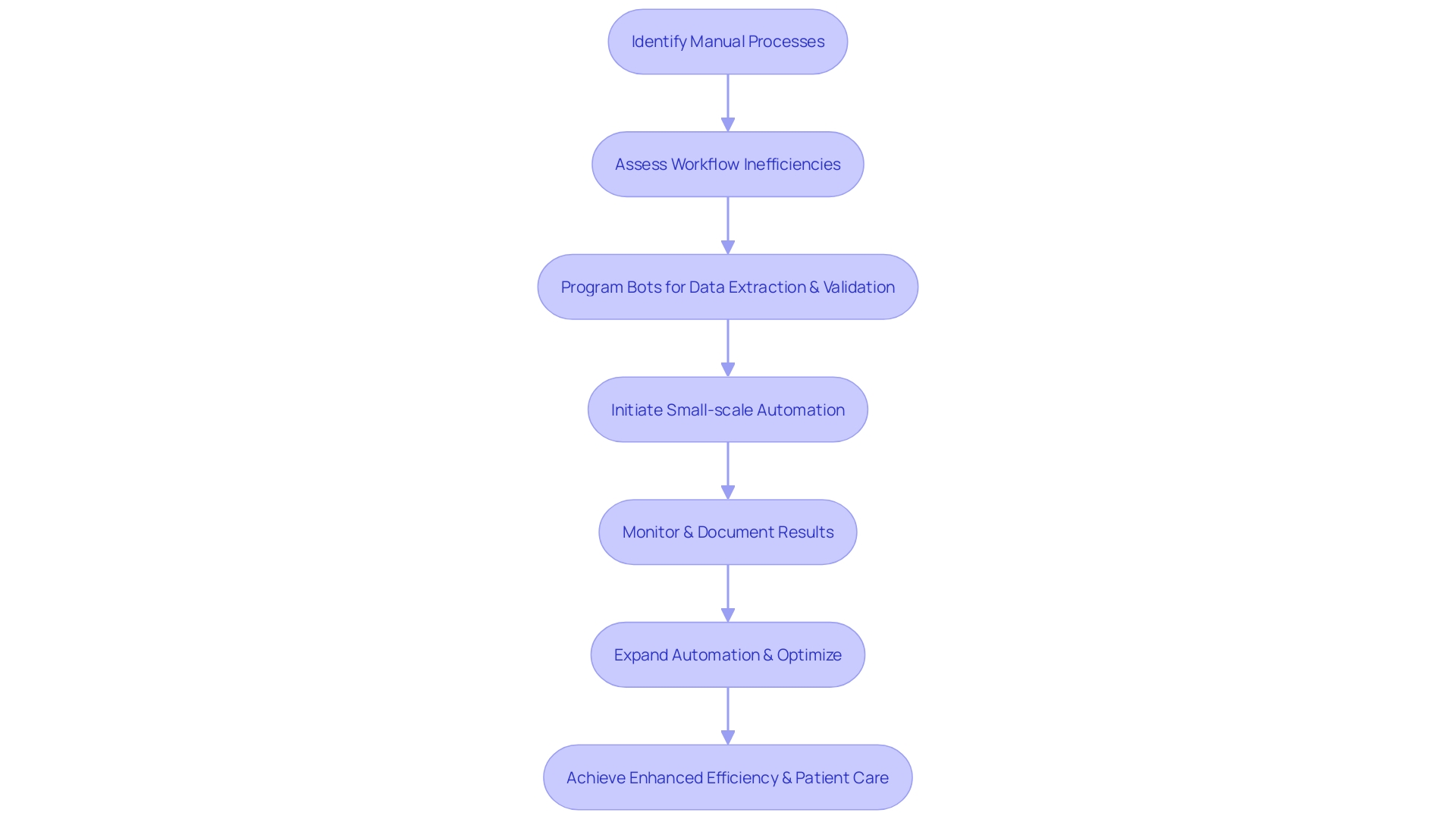
Use Case 2: Appointment Scheduling and Management
Robotic Process Automation (RPA) stands poised to transform healthcare operations, particularly in the realm of appointment scheduling. By harnessing RPA, healthcare facilities can automate the intricate process of scheduling, which includes matching patient preferences with healthcare professional availability, and managing follow-ups. The introduction of RPA bots to handle these workflows promises to streamline administrative responsibilities, leading to fewer errors and a higher level of patient satisfaction.
Through the integration of AI, healthcare organizations can leverage the full potential of RPA, combining patient and provider data to create an interconnected system that facilitates efficient appointment management. With the capability to navigate the healthcare sector's unique variables, RPA and AI together can provide a robust solution for appointment scheduling that minimizes the need for human intervention and enhances overall efficiency.
Use Case 3: Billing, Payments, and Claims Processing
Robotic Process Automation (RPA) is transforming the healthcare sector by automating the billing, payments, and claims processing cycle, traditionally fraught with complexity and prone to human error. RPA's capability to perform repetitive tasks with precision means it can accurately extract data from medical records, generate bills, and process payments, leading to an uptick in financial performance and operational efficiency. Moreover, RPA aids in identifying and rectifying billing discrepancies, which is crucial in reducing the incidence of claim denials.
This not only bolsters revenue cycle management but also addresses the underlying inefficiencies inherent in manual processes. With the high administrative costs in the U.S. healthcare system, which can reach $20.49 in billing costs per primary care visit, the potential for cost savings is significant. Additionally, the implementation of RPA can combat the risks associated with legacy systems, which, according to a 2022 HIMSS report, are a substantial security threat due to their prevalence in 73% of surveyed healthcare organizations.
RPA's role extends beyond just operational efficiency; it's also a strategic move towards modernization and securing patient data. As healthcare leaders consider automation, it's imperative to evaluate which processes are ripe for RPA integration, the time and cost involved, and the expected return on investment, which has been reported to be as high as 25% in some cases, according to user reviews of platforms like SAP Build Process Automation.
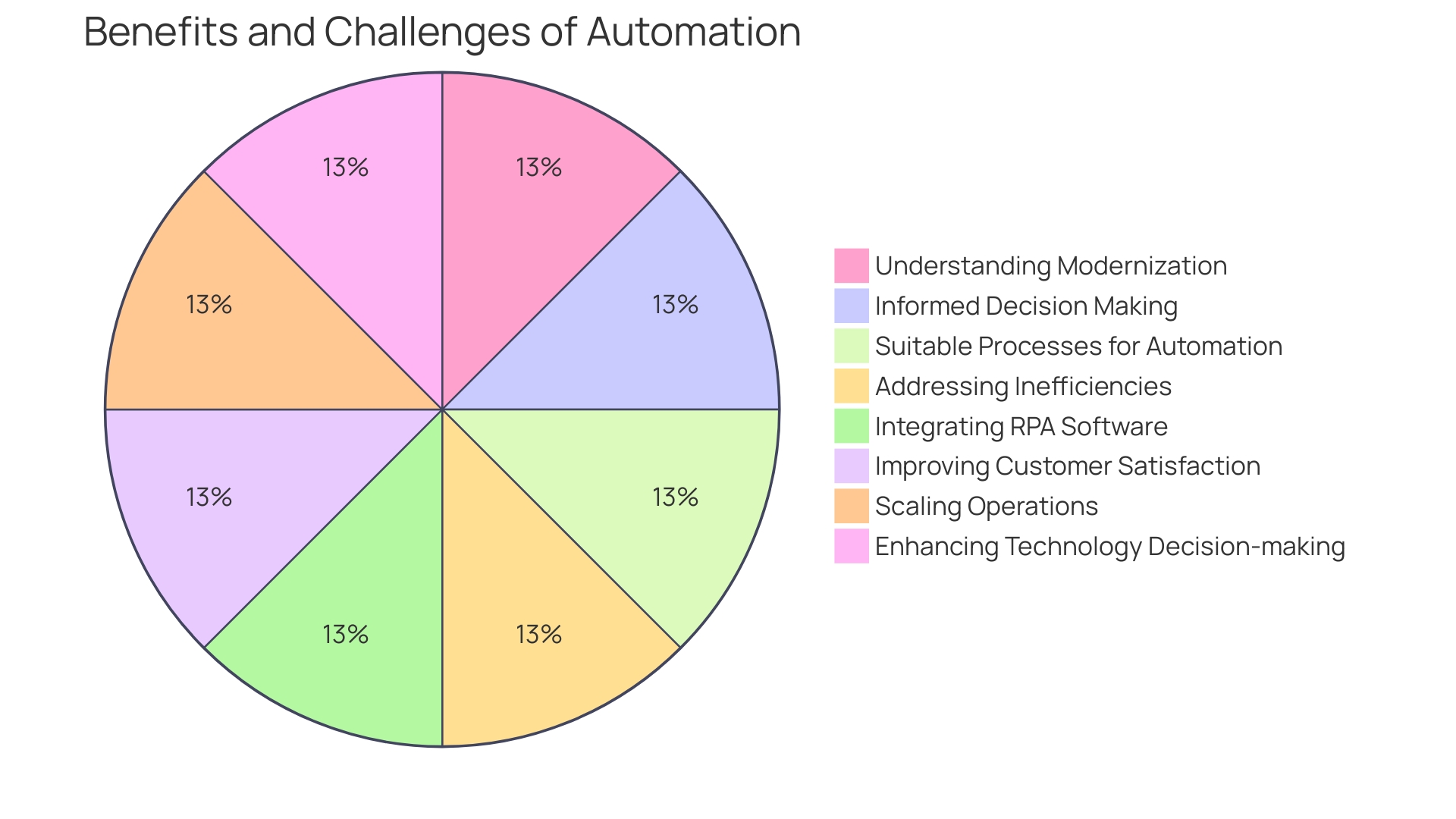
Use Case 4: Patient Data Management and Analysis
In the realm of healthcare, the management and analysis of patient data are paramount for providing personalized and effective treatment. The advent of Robotic Process Automation (RPA) offers a transformative solution to the time-consuming tasks associated with data management. RPA bots excel at aggregating, structuring, and maintaining patient information from disparate sources, guaranteeing the integrity and availability of data.
These automated systems are not only adept at ensuring data precision but also play a pivotal role in data analysis. By automating complex calculations, crafting detailed reports, and detecting emergent patterns and trends, RPA tools empower healthcare institutions to make decisions rooted in solid data, thus promoting better patient outcomes and elevating the overall quality of care.
To harness the full potential of RPA in healthcare, leaders must conduct a thorough evaluation of existing manual processes to determine their suitability for automation. This strategic approach involves pinpointing inefficiencies that RPA can resolve, assessing the integration costs and time, and projecting the return on investment. Such diligence is crucial, especially when considering that a significant proportion of healthcare organizations continue to rely on legacy systems, which, as reported in 2022 by HIMSS, pose substantial security risks due to their obsolescence and lack of support.
By opting for RPA, healthcare providers can mitigate these risks while enhancing operational efficiency, ultimately transforming resource-intensive processes and setting a new standard in patient care.
Use Case 5: Supply Chain Optimization
In the realm of healthcare, managing the supply chain is not just a matter of efficiency, but also critical to patient safety and care. Robotic Process Automation (RPA) stands out as a transformative force in this domain, particularly by enhancing inventory management, order processing, and delivery tracking. RPA bots have the capability to continuously monitor stock levels, automatically generate procurement requests, and keep a vigilant eye on shipment progress.
This technology ensures that healthcare providers are equipped with the necessary medical supplies, thereby preventing stock shortages that could jeopardize patient treatment plans.
For supplier relationships, RPA proves invaluable by automating routine communications and managing contracts with precision. This not only reduces the likelihood of human error but also frees up valuable time for healthcare professionals to dedicate to patient-centric activities. The adoption of RPA in supply chain management paves the way for healthcare organizations to bolster operational efficiencies, mitigate errors, and, ultimately, deliver superior patient care.
A testimony to the power of RPA in healthcare is seen in the case of Guthrie Clinic, which takes a holistic approach to IT solutions, enhancing community health and patient well-being. Similarly, companies like Specsavers confront complex supply chain challenges with a global scope, utilizing in-house technologies to adapt to the unique demands of optometry equipment and medical devices. Ambience, a smaller entity, sought to perfect its product offerings by leveraging external expertise in healthcare data standards, avoiding the pitfalls of in-house integration complexities.
As these organizations illustrate, embracing digital transformation through RPA can lead to an elegant insights platform, accessible to all levels of hospital staff. This aligns with the insights from Performance360, which emphasizes the critical role of experienced auditors in understanding and optimizing manufacturing processes and quality management systems across industries, including healthcare. These examples underscore the significance of strategic digitalization and the benefits it brings to the healthcare supply chain, highlighting RPA as a first-in-class solution for fostering business success and enhancing patient outcomes.
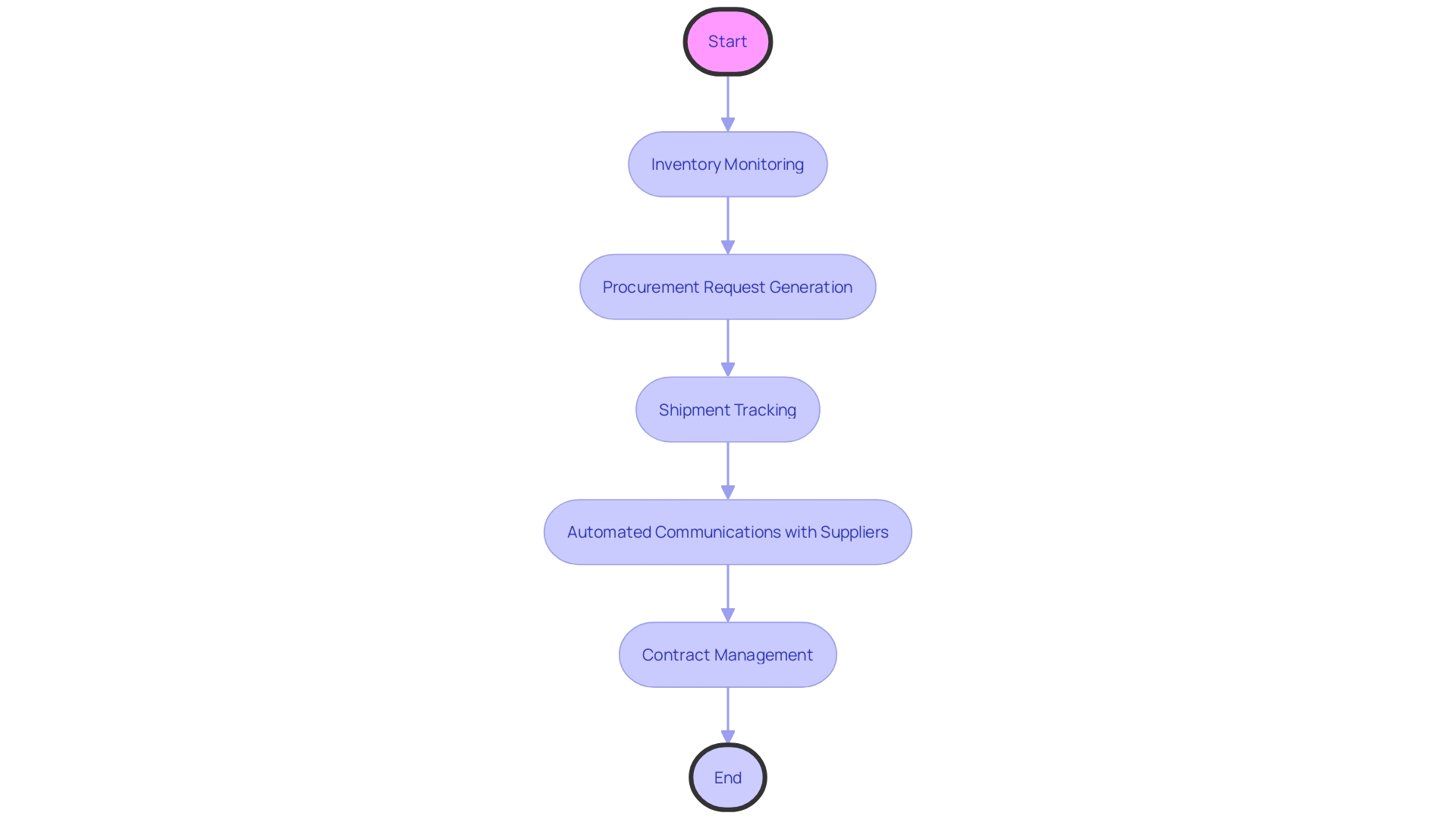
The Role of AI in Enhancing RPA Capabilities
In the dynamic world of healthcare, the integration of RPA with advanced AI technologies is revolutionizing operational workflows. By harnessing the power of Natural Language Processing (NLP) and Machine Learning (ML), RPA bots are now capable of interpreting and managing unstructured data, including intricate medical records and patient histories. This fusion is particularly transformative for tasks such as clinical documentation and medical coding, which are traditionally labor-intensive and prone to human error.
The practical implications of this synergy are manifold. For instance, an AI-driven algorithm in use at a leading hospital analyzes a plethora of patient data in near-real time, such as vital signs and lab results, to predict potential health deteriorations. This model operates continuously, assessing risk every 15 minutes, and alerts the care team if a patient's condition appears to be declining.
This not only reinforces the safety net for patients but also exemplifies how AI can contribute to a more resilient health system, bolstering communication between care team members.
Moreover, the strategic application of generative AI is transforming the medical device compliance landscape. Innovators no longer have to navigate the complex regulatory process unaided. By leveraging AI, the path to compliance is streamlined, catalyzing the development and market entry of medical devices.
This is especially critical as the medical device industry thrives, with a forecasted growth rate of 5.4% from 2021 to 2028, and faces the challenge of an estimated 1.5 million medical devices that require meticulous regulatory scrutiny.
For healthcare organizations contemplating the leap towards automation, it's essential to identify which manual processes are ripe for automation and to evaluate the potential inefficiencies that RPA can address. The integration of RPA should not only aim at reducing costs and enhancing productivity but also at improving the overall healthcare experience and supporting the workforce, particularly in the face of global health worker shortages.
In summary, the blend of RPA and AI is not just a technical upgrade—it's a paradigm shift towards higher automation, efficiency, and accuracy, which ultimately translates to better patient care and a more resilient healthcare system.
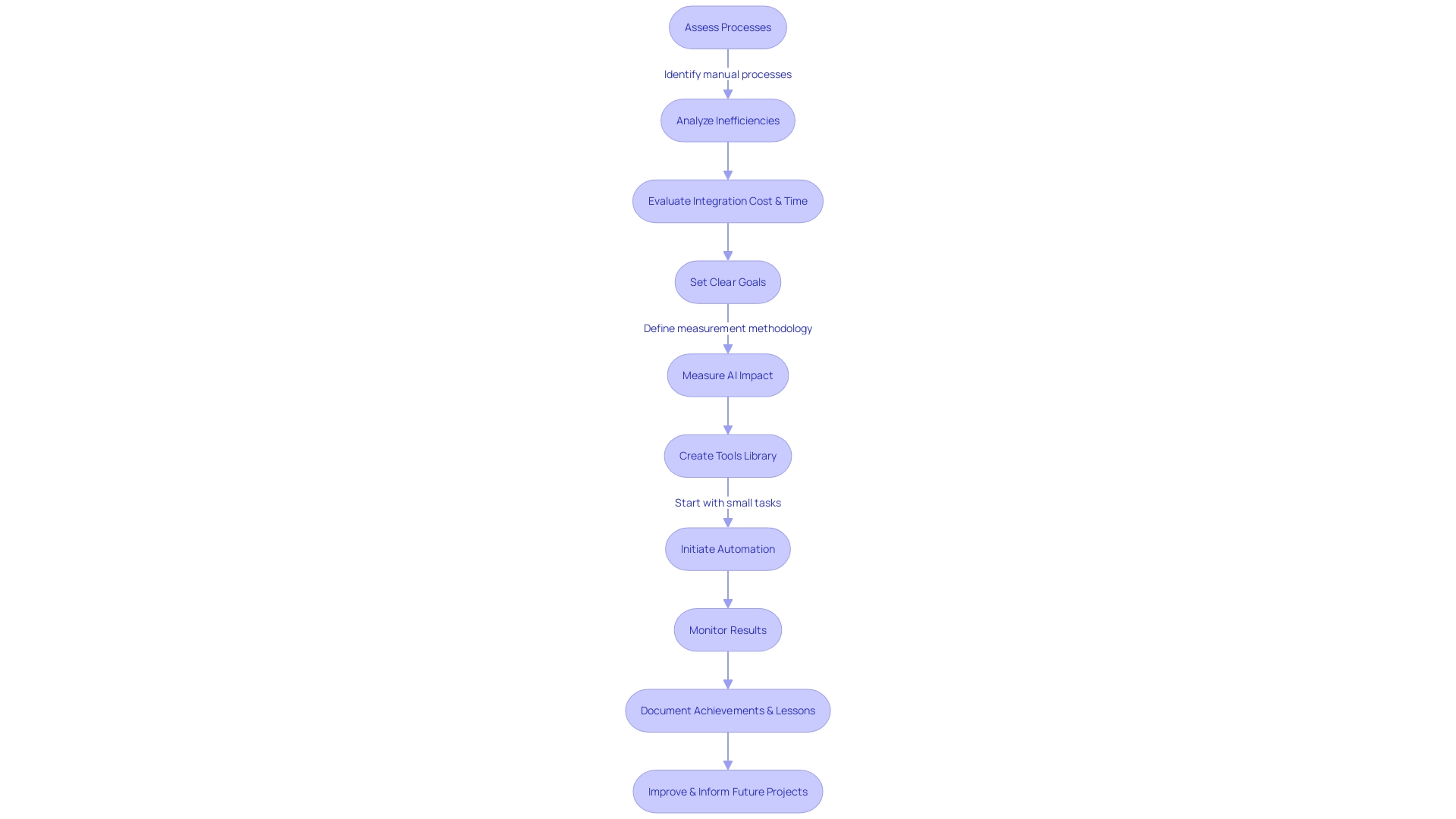
Benefits of RPA in Healthcare Operations
Robotic Process Automation (RPA) is transforming healthcare by streamlining tedious, repetitive tasks, thus enabling medical professionals to allocate more time to patient care. RPA not only enhances operational efficiency by reducing the likelihood of human errors but also accelerates processes and shortens cycle times. By automating processes like data entry, it ensures the accuracy and consistency of data across systems.
Healthcare organizations can leverage RPA to optimize their resource use and decrease the administrative load, leading to substantial cost savings. Such strategic deployment of RPA contributes to the delivery of superior healthcare services, optimizes patient outcomes, and fosters operational excellence.
As the healthcare industry increasingly adopts technologies like Epic EHR and Cerner, which manage a significant portion of electronic health records globally, the integration of RPA can further enhance these systems' efficiency. For instance, implementing RPA has been reported to cut down error rates and processing times by approximately 30% and 50%, respectively, in order processing and invoice generation, leading to a notable ROI. These improvements signify financial benefits and a step towards more streamlined inventory management, with discrepancies reduced by 40%.
The strategic incorporation of RPA, therefore, not only reinforces the digital transformation in healthcare but also propels organizations towards achieving a competitive edge in patient care and operational management.
Case Study: Successful Implementation of RPA in Healthcare
The integration of Robotic Process Automation (RPA) within healthcare is revolutionizing the industry by automating routine and repetitive tasks, leading to improved efficiency and patient care. A prominent case study from a large hospital system showcases the profound influence RPA can have. By adopting RPA in areas such as electronic health records management, appointment scheduling, billing, and supply chain operations, the hospital achieved significant time savings and a marked reduction in errors, directly translating to enhanced patient satisfaction.
Additionally, the hospital realized cost savings by optimizing resource allocation and streamlining overall processes. The decision to implement RPA was predicated on meticulous planning and assessment of manual processes ripe for automation, considering the potential return-on-investment and the ability of the existing systems to integrate with new RPA software. This strategic approach ensured that the adoption of RPA was not only successful but also sustainable, exemplifying a transformation in healthcare operations fueled by intelligent automation.

Overcoming Implementation Challenges
Navigating the complexities of RPA implementation in healthcare is essential for enhancing efficiency and patient care. It is imperative to recognize that while the potential benefits are significant, the path to modernization comes with its set of challenges. Healthcare professionals may exhibit resistance to the change brought about by automation.
To mitigate this, providing comprehensive training and detailed education on the advantages and functionalities of RPA is crucial. Moreover, the selection of processes for automation requires careful consideration. Leaders must ask critical questions regarding the suitability of manual processes for automation, identify inefficiencies that RPA can alleviate, and assess the time and cost implications of integrating RPA software for each process.
Data security and compliance with regulations stand as pillars of healthcare RPA integration. Establishing stringent data protection protocols is non-negotiable, and adherence to regulatory mandates is indispensable. For instance, the Guthrie Clinic's holistic approach to healthcare IT solutions exemplifies the need for a secure and compliant integration of technology that aligns with the organization's commitment to community health and support.
Furthermore, the increasing reliance on outdated legacy systems poses a silent threat to the security of healthcare data. A startling 73% of healthcare organizations surveyed in a 2022 HIMSS report were still using legacy systems, which lack the support and regular updates necessary to protect against security vulnerabilities. This reinforces the importance of a strategic approach to RPA implementation, ensuring that the chosen solutions are not only effective but also secure and up-to-date.
In conclusion, healthcare organizations aiming to implement RPA must do so with a strategic, informed, and secure approach. By addressing the challenges of change management, data security, and compliance, and by selecting appropriate use cases for RPA, organizations can truly maximize the impact of this transformative technology.
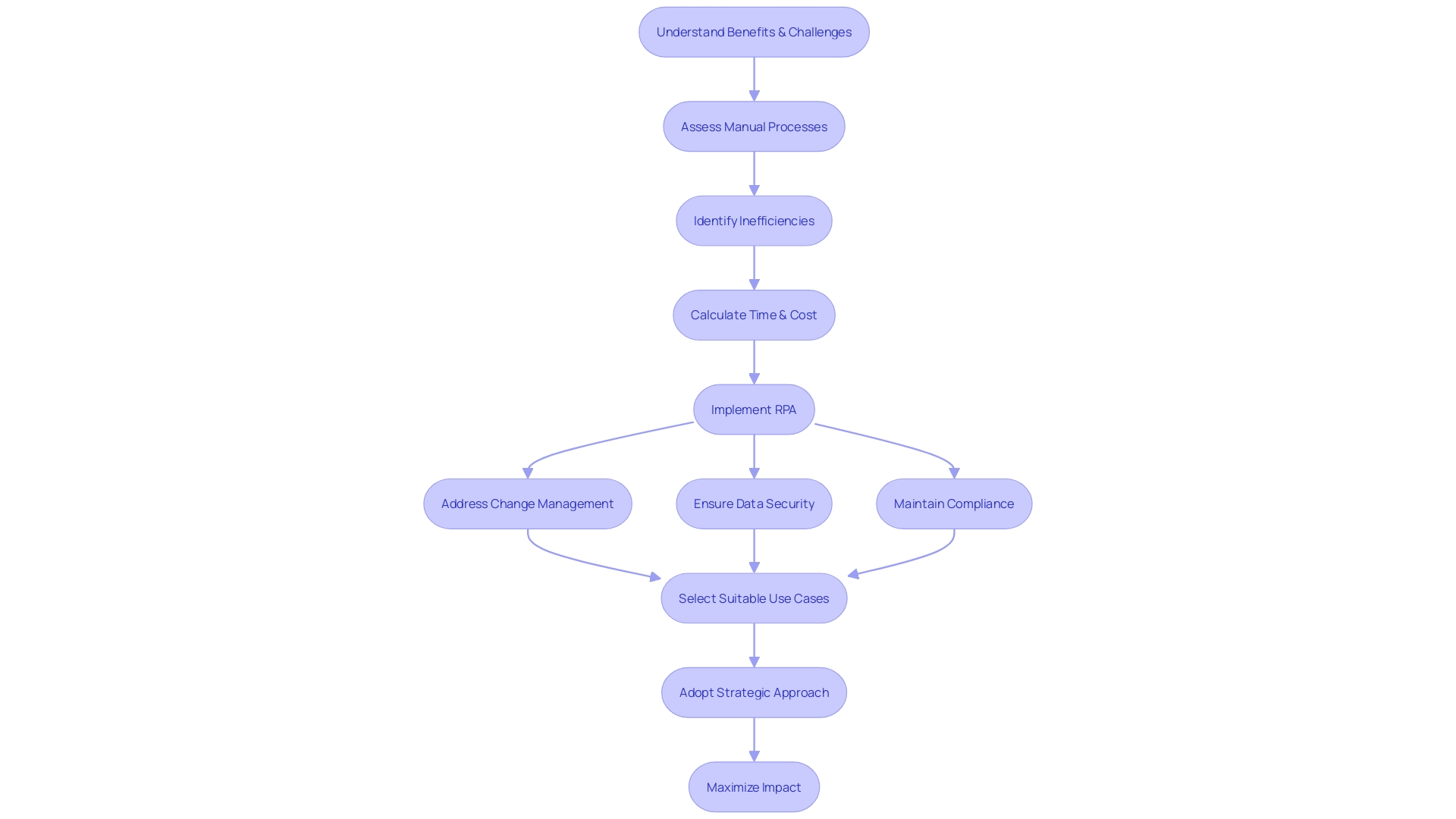
Future of RPA in Healthcare: Integration with AI and Other Technologies
Robotic Process Automation (RPA) stands at a transformative juncture within healthcare, promising to evolve into an even more integral facet of medical service delivery. As healthcare institutions increasingly adopt RPA, its amalgamation with advanced AI technologies like machine learning and natural language processing is set to elevate the capability of RPA bots to perform sophisticated tasks and make data-driven decisions. This evolution echoes the first generation of artificial intelligence in healthcare, which was built on rules-based systems, offering a parallel to the early decision-making algorithms taught in medical schools.
The incorporation of RPA with nascent technologies such as physical task automation (RPA-P) and the Internet of Medical Things (IoMT) is forecasted to be a game-changer, potentially streamlining operations to an extent previously unattainable. This is not without challenges, as the integration of new digital solutions requires meticulous evaluation of security, appropriateness, and compliance. The adoption process, which often begins with a thorough initial assessment by digital service teams, ensures that technology requests meet rigorous standards and align with existing capabilities.
Healthcare leaders are tasked with determining which manual processes can be automated and evaluating the potential return on investment. With 88% of health system executives acknowledging the high impact of AI, yet only 20% planning to invest in the near future, the industry faces a pivotal moment. The integration of AI in healthcare, while laden with potential, is contingent upon overcoming the 'Productivity Paradox' by adapting workplace processes, structures, and culture to fully harness the benefits of these technologies.
As we look ahead, the healthcare landscape is primed for a revolution in efficiency and patient care, underscored by a growing reliance on AI-powered software and the anticipation of Ai's significant impact on the industry. Healthcare organizations that successfully navigate the complexities of technology integration stand to achieve unprecedented automation and patient-centric care, heralding a new era of medical excellence.
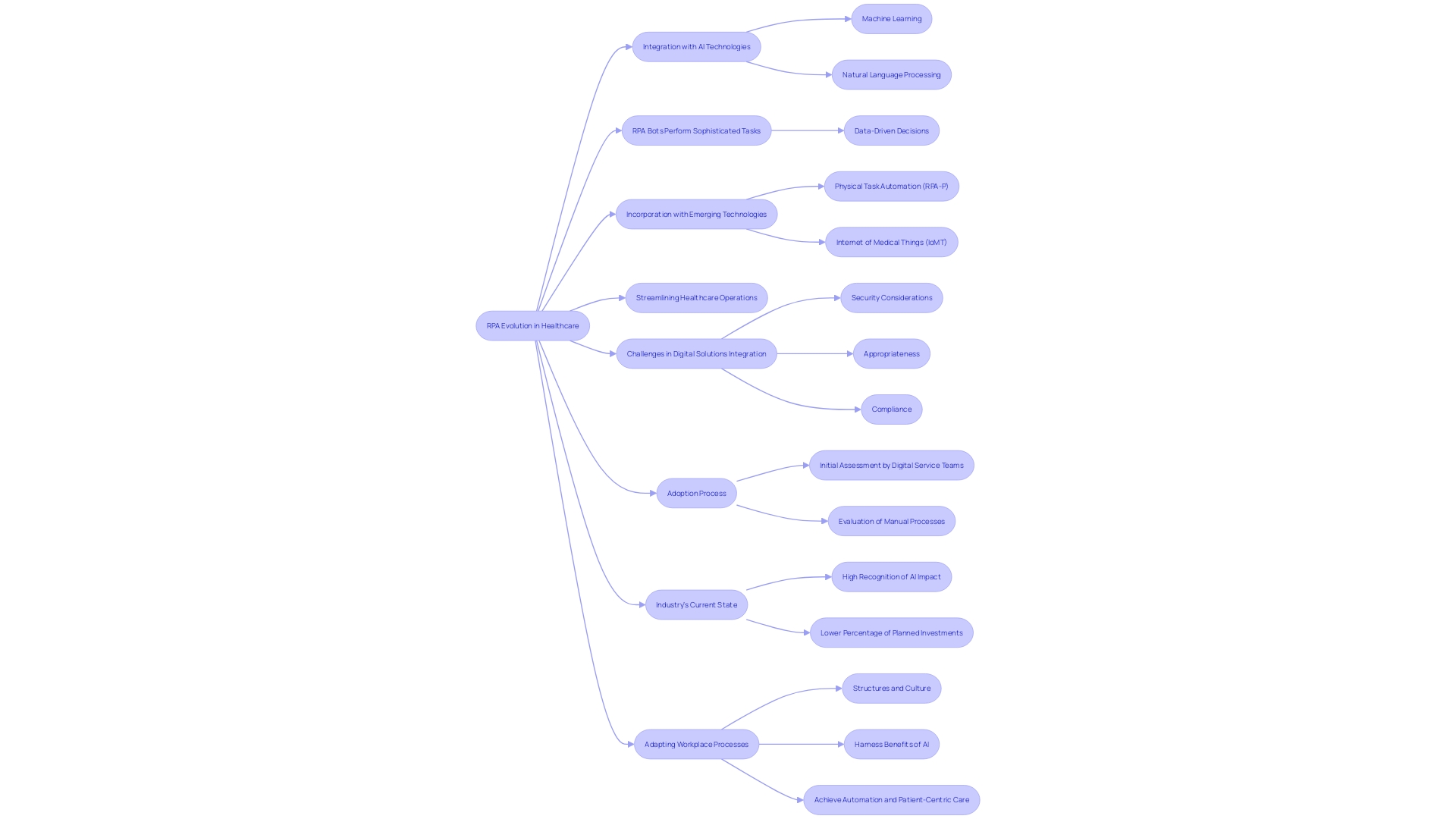
Conclusion
In conclusion, the integration of Robotic Process Automation (RPA) in healthcare operations is revolutionizing the industry. RPA streamlines manual processes, enhances efficiency, and improves financial performance. By automating tasks like data entry, RPA ensures accuracy and consistency, leading to cost savings and improved patient outcomes.
The strategic use of RPA, combined with advanced AI technologies like NLP and ML, further elevates its capabilities. This fusion of RPA and AI enables the interpretation and management of complex medical records, paving the way for a more resilient and patient-centric future.
RPA is transforming various aspects of healthcare, including electronic health records management, appointment scheduling, billing, and supply chain optimization. By automating these processes, healthcare organizations enhance accuracy, efficiency, and patient care. The integration of RPA reinforces digital transformation and sets a new standard in operational excellence.
Successful implementation of RPA requires careful planning and assessment of suitable processes. Healthcare organizations must address challenges such as change management, data security, compliance, and reliance on outdated legacy systems. By strategically selecting use cases and ensuring a secure approach, organizations can maximize the transformative potential of RPA.
The future of RPA in healthcare lies in its integration with advanced AI technologies and emerging solutions like RPA-P and IoMT. This integration streamlines operations and propels organizations towards unprecedented automation and patient-centric care. Healthcare leaders must embrace these technologies to achieve a new era of medical excellence and drive the industry forward.





